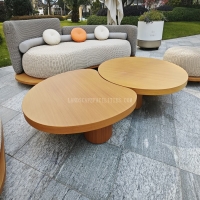Welcome to the website for landscape facilities products and knowledge.
What are the implications of using self-cleaning or photocatalytic surfaces on landscape tables?
The integration of self-cleaning and photocatalytic surfaces into landscape tables is transforming outdoor furniture design by combining functionality with sustainability. These advanced materials leverage sunlight or rainwater to break down organic dirt, pollutants, and even bacteria, significantly reducing manual cleaning efforts.
Photocatalytic coatings, often containing titanium dioxide, activate under UV light to decompose grime and airborne contaminants. This not only maintains aesthetic appeal but also improves hygiene in public spaces. Self-cleaning hydrophobic surfaces repel water and dust, preventing stains and mineral deposits.
Key benefits include:
1. Reduced Maintenance Costs – Eliminates frequent power washing or chemical cleaners.
2. Eco-Friendly Performance – Minimizes water/chemical usage and lowers carbon footprint.
3. Longer Lifespan – Resists weathering, fading, and microbial growth.
4. Improved Public Health – Inhibits mold and bacteria accumulation.
Ideal for parks, campuses, and urban landscapes, these innovations align with green building trends while addressing practical challenges of outdoor upkeep. Future developments may integrate smart sensors to optimize cleaning efficiency further.
By adopting such technologies, designers and municipalities can create durable, low-maintenance public furniture that meets both environmental and operational goals.
Related search:

Recommendation
Elliptical metal outdoor table with nested design, resembling wood grain, round table